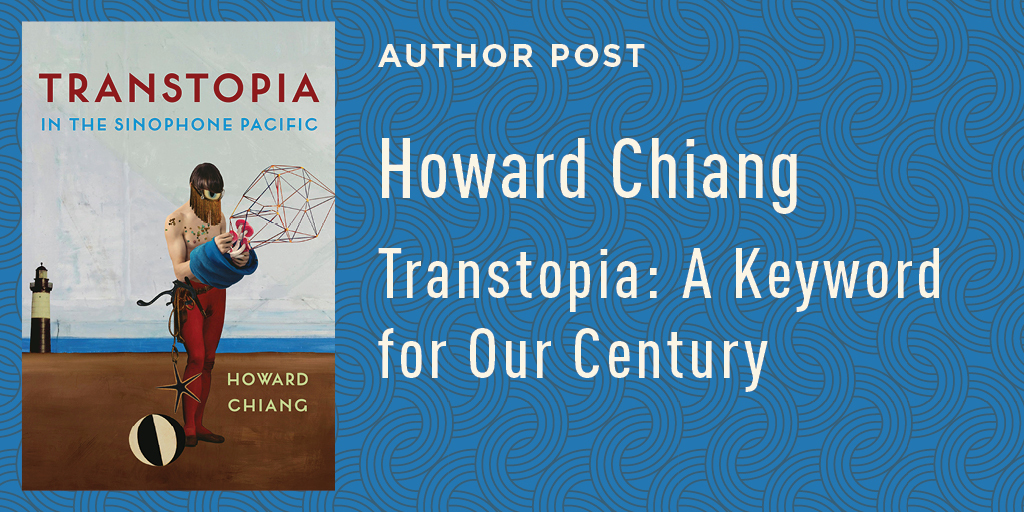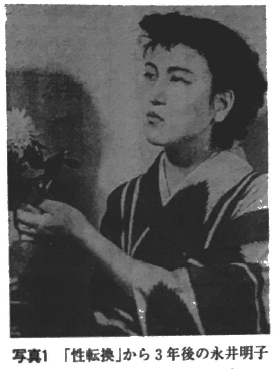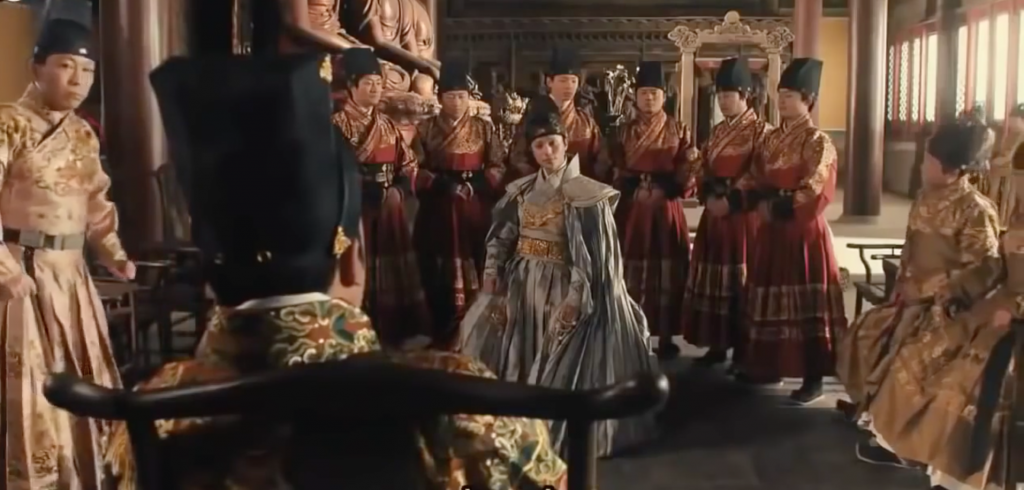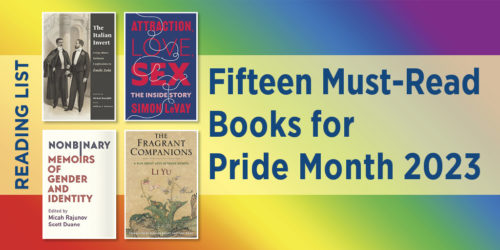Transtopia: A Keyword for Our Century
By Howard Chiang

My first attempt to bring together Chinese studies and transgender studies dates to a conference I organized in 2009. That conference resulted in an edited volume called Transgender China (2012). Not long after the book appeared, I discovered that my approach had been crippled by the available categories. Some Anglophone readers criticized the ways in which the term transgender was used to describe a range of phenomena in Chinese culture that were seemingly incongruent with the concept as it is understood in the West. To quote one reviewer, “when it comes to something that, at least for me, [is]? as clearly defined as ‘transgender’ (namely, identifying with a gender not that assigned at birth), much of the discussion [in this book] seems genuinely problematic.” Many of the examples in Transgender China were simply not “trans enough” for this reader. On the one hand, I was surprised by the degree of boundary policing in an emergent field. On the other, reactions like this pushed me to think harder about the promise and limitations of trans discourse.
Another episode led me to rethink my approach to trans studies. In 2016, I was invited to talk about transgender issues at a workshop on marriage and the family in Suzhou, China. In a room full of sociologists and demographers, my paper met with an enthusiastic response. There was one question that caught me off-guard, however, and it has left a legacy on my thinking over the years. A senior participant asked me to provide a quantitative estimate of the number of trans people in the country. I am sympathetic to such an interest in statistical measures, especially given their function as an aggregate indicator at the population level. Yet, as a historian of sexology, I have always been very suspicious of such numerical measures and the practicality of acquiring them. Apart from the notorious difficulty with definition and sampling, Chinese academia remains extremely hostile to lesbian and gay studies, let alone transgender research. More importantly, queer theory has taught me to challenge a purely minoritarian conceptualization of variance.
If the reception of Transgender China raised the question of what a non-Western perspective can bring to the study of “transgender,” my experience at the workshop suggested the need to reorient the way transness is understood in Asian studies. In my new book, I coin transtopia as a neologism to peel back the layers of cross-cultural politics in anti-transphobic inquiry. Transtopia refers to different scales of gender transgression that are not always recognizable through the Western notion of transgender. It allows us to historize gender mutability that exceeds (1) the transphobic denial of the past and (2) the transgender presumption of the present.
In Transtopia in the Sinophone Pacific, I analyze in detail examples of sex transformation, queer inhumanity, cinematic castration, and civic change. One of the historical episodes discussed in chapter 1 is the story of “global Christine.” In the 1950s, the subject of sex reassignment commanded widespread media attention not only in the West, but also in Mexico, Taiwan, and Japan. Following the stardom of the American Christine Jorgensen (1926–1989), each of these countries claimed that they had their own Christine: the Mexican Christine was Marta Olmos (b. 1931), the Japanese Christine was Nagai Akiko, and the Chinese Christine was Xie Jianshun (b. 1918). Each of them has a different story to tell, and my point is that by establishing a transtopian continuum, their stories can be situated on it non-hierarchically as inter-related. We can therefore refrain from treating one specific case, typically the Western Christine, as the norm from which the degree of transness is determined.

My proposal of transtopia performs several kinds of intervention. On an individual basis, this is a determined move to queer transness so that its diversity can be readily acknowledged. As literary theorist Eve Kosofsky Sedgwick reminded us in Epistemology of the Closet (1990) over thirty years ago: “People are different from each other.” It is indeed surprising how few eloquent conceptual tools have been developed to unpack this mundane and self-evident fact of life. Transtopia argues that transgender differences are best thought out as interconnected and relational, rather than discrete and stratified.
But I think transtopia also helps us to rethink broader disciplinary concerns. As anthropologist David Valentine has shown in Imagining Transgender (2007), when a discipline came to be consolidated around the very category of “transgender” in the 1990s, the rubric was typically assumed to capture something more advanced than premodern, traditional, old-fashioned, or “local” non-Western understandings of gender, embodiment, and identity. Recent efforts to revise trans historiography—through the lens of race, for instance—continues to circle back to the confines of the West as a point of departure. Whereas it would be acceptable for authors dealing with specific cultures such as those of the United States to use generic titles like Female Masculinity, Trans*, Female Husbands, Transgender History, A Racial History of Trans Identity, and so on, authors dealing with non-Western cultures are often expected to mark their subject matter with words such as “Chinese,” “Japanese,” and “Indian.”
Moreover, the politics of transness is most acute in cross-cultural contexts. On the one hand, in global queer studies, we are familiar with the anxiety that certain native categories have become homogenized through the forces of globalization. These include hijra in India, waria in Indonesia, kathoey in Thailand, muxe in Oaxaca, renyao in Sinophone societies (the history of which is explored in chapter 3 of my book), and two-spirit people in Native American cultures. On the other hand, there is also the argument that by recasting these categories as “trans/gender,” they become legible in a global context, which suggests the plausibility of universal recognition, acceptance, and solidarity.
Is the trans- in “transgender” the trans- in “transnational”? We won’t be ready to address this question until we stop finding the roots of trans* in Western history alone.
Howard Chiang is associate professor of history at the University of California, Davis, and the author of Transtopia in the Sinophone Pacific.










1 Response